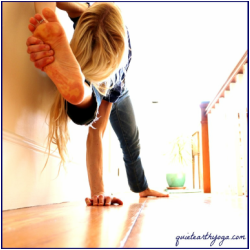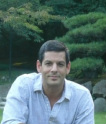 Flexibility training is the second form of exercise. Stretching is the most common form of flexibility training and it is vital for improving and maintaining mobility. Doctors commonly speak of (and routinely measure) something called ‘Range of Motion’ (ROM), which compares the movement of a joint or body area against a set of pre-determined ‘normal’ values. But ROM, measured in degrees of movement, while useful for certain medical purposes, is an artificial construct. ROM measurement has poor inter-examiner reliability (every doctor reads the ROM differently), does not adjust for age, gender, or body type, and captures only a very limited amount of data about mobility. In addition, the stereotyped movements associated with ROM do not reproduce normal, natural body movement and, inversely, the vast majority of normal body movements which involve the complex coordination of many muscles are not part of standard ROM testing. Range of motion is not the same thing as mobility. Our bodies are designed in layers. Around the chest, abdomen, and pelvis are deep, intermediate, and superficial layers of muscle tissue separated from each other by wrappings called fascia. These fascia-wrapped layers are sometimes called ‘fascial planes.’ Optimal function of the musculoskeletal system includes the easy gliding of these fascial planes against each other. Twisting and reaching, bending, pulling, and pushing, all involve the coordinated contraction of many groups of muscles, movers and stabilizers, and depend on the ability of deep, intermediate, and superficial muscles to glide easily against each other. The healthy gliding of fascial planes is maintained by complex movements which are part of our physical nature. The more we move, the more lubricants our joints produce and the more freely our fascial planes glide. But for many of us, the routines of our daily lives take place in very limited ranges of movement. We drive to work, sit at computers, talk on telephones, relax on sofas, eat at tables. How often do we jump as high as we can, run at top speed, or climb a tree? When was the last time you used all of your strength to do anything? If you are like most people, you are not coming anywhere near the limits of what you are physically capable when it comes to either movement or strength/effort. Which is why the occasional moving of furniture, digging out a bush, or participation in a yoga class can leave us sore or worse–injured. Certainly, we derive benefits from our civilized existence, but we also pay a price. Inactivity means loss of strength, reduction in the production of lubricants (which compounds the effect of loss of collagen and other important components of connective-tissues as we age), and the development of fixations and adhesions–the drying out and sticking together of our connective tissues including the fascial planes which are essential for movement and optimal musculoskeletal function. Over the last 5 years, a new form of movement, known as ‘Dynamic Spinal Stretching (DSS)’ or Stick Stretching,‘ first developed by Dr. Arthur Feygenholtz, has been gaining popularity for Diffuse, low-grade cellular inflammation causes our fluids to thicken, and the lubricants we produce to aid in motion to become sticky like glue. Over time, this glue locks connective tissues together. When this happens at a joint, it is referred to as a ‘fixation.’ When it happens between muscles or their fascial coverings, it is called an ‘adhesion.’ As fixations and adhesions develop, complex movements like turning to look behind you when backing out of a parking space become more difficult. We chalk it up to the aging process, but in truth, there is much we can do to prevent and reverse the progressive formation of joint fixations and myofascial adhesions. Stretching, sports such as basketball and volleyball which require us to reach, jump, and twist our bodies, and the practice of yoga with its compound movements and poses are just some of the ways people have found to improve mobility. Ask anyone who plays such a sport or has a regular yoga practice how they feel about it and they will tell you that there is a certain feeling of well-being which comes from these activities which they cannot get any other way. They may not be able to articulate exactly what that feeling is, but there is a sense of bodily freedom which comes from breaking adhesions and fixations which is truly rejuvenating. Breaking adhesions helps to reverse the feeling of stiffness which is one of the primary symptoms of the aging process. its unique ability to break up fixations and adhesions by allowing deep stretching to take place across the broad fascial planes of the body. Dr. Berkoff has used this technique to develop a series of stretches and movements which he has incorporated into his Kore Klass routine which can be done at home. Since lower back pain affects 80% of Americans at some point in their life, and more than 20% of all people over the age of 30 have recurrent or chronic lower back pain and discomfort, Kore Klass was developed as an essential part of health maintenance. Dr. Berkoff tries to interest all of his patients in three things: the Anti-inflammation Lifestyle (AIL), a Core training or back routine, and stick stretching, the Kore Klass.
0 Comments
Leave a Reply. |
AuthorArchives
August 2021
Categories
All
|


 RSS Feed
RSS Feed